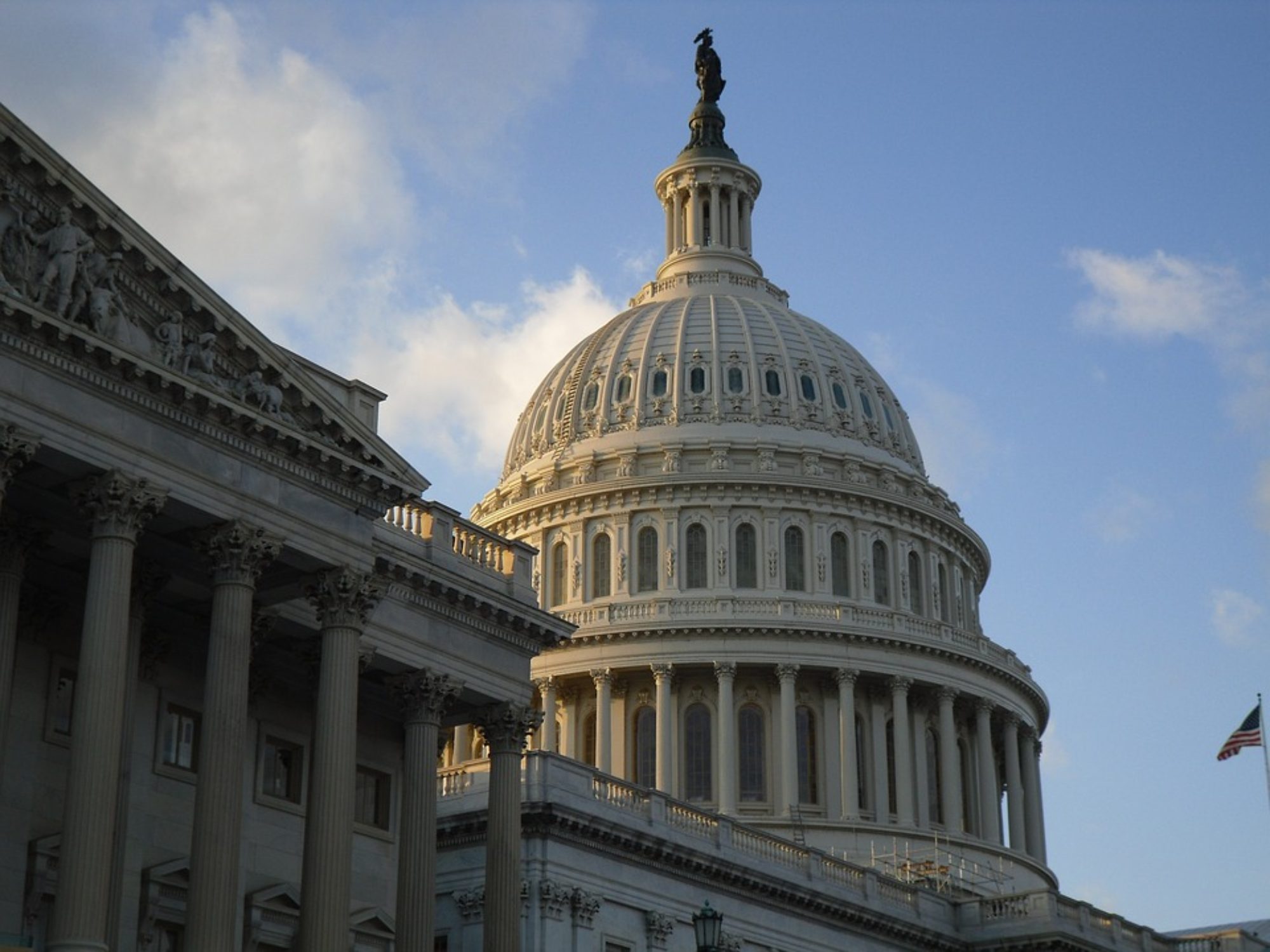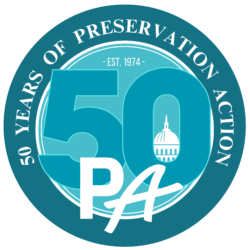This overview was created by the Federal Historic Preservation Program Task Force, that formed in 2011 to complete an examination of these issues to document the condition and trajectory of the External Programs of the National Park Service, generate metrics to examine the problems, identify the causes, and deliver strategies for improvement. Building upon past studies, “Aligned for Success…Recommendations to Increase the Effectiveness of the Federal Historic Preservation Program,” included a strong grassroots advocacy component to drive results.
In summary, the definition of the federal historic preservation program used by the Task Force is meant to refer to the federal component of a broader set of federal, state, tribal, and other prescribed programs and partnerships referred to within Title I of the National Historic Preservation Act of 1966, the responsibility for which rests with the DOI and is assigned to the NPS. As an administrative matter, it includes several programs overseen by the NPS Associate Director for Cultural Resources and subsequently managed by an Assistant Associate Director for Heritage Preservation Assistance Programs and an Assistant Associate Director for Historic Documentation Programs. Often this collection of programs is referred to by the NPS as External Programs, because they serve needs outside of the National Park System.
Core functions included within the general concept of External Programs include the National Register of Historic Places, the Federal Rehabilitation Tax Credit Program, administrative and oversight functions of federal Grants-in-Aid programs, federal agency preservation programs, the Save America’s Treasures, Preserve America and National Heritage Area programs, Certified Local Government programs and others.
Learn more about the Federal Historic Preservation Program Task Force →
The National Historic Preservation Program
The National Historic Preservation Program (NHPP) as we know it today was created by the National Historic Preservation Act of 1966 (NHPA). The NHPA was enacted to coordinate federal and state efforts to preserve historic properties and cultural resources nationwide, to encourage private agencies and individuals undertaking preservation by private means, and to assist state and local governments and the National Trust for Historic Preservation (NTHP) to expand and accelerate their historic preservation programs and activities. It also established the National Register of Historic Places to recognize and designate historic properties of national, state, and local significance. The 1966 Act, under Title II, also established the Advisory Council on Historic Preservation (ACHP), which became independent in 1976.
Broadly speaking, the term “National Historic Preservation Program” is generally understood to refer to the array of functions distributed across among numerous agencies and entities at various levels of government and the private sector as contemplated by the NHPA. This includes partnerships across federal agencies, including the ACHP; between the National Park Service (NPS) and the NTHP; partnerships with State Historic Preservation Offices (SHPOs) and Tribal Historic Preservation Offices (THPOs), partnerships with tribes without THPOs, as well as work at the community level through Certified Local Governments (CLGs). This array of multi-tiered partnerships in which the NPS is a lead participant forms the core of the preservation movement.
The federal government funds a portion of the core NHPA-related activities of SHPOs, CLGS (trough the SHPO), THPOs and tribes through annual grants from the Historic Preservation Fund (HPF). This HPF funding is in addition to appropriations made annually to pay for the work of preservation professionals at the NPS. Thus, at least as a federal budgetary matter, the NHPP itself consists of two conceptual components—funds that pay for the NPS federal component of the NHPP (sometimes referred to as the NPS Preservation Programs or External Programs) and funds administered by NPS which are granted by the federal government to other participants in the broader set of NHPP partnerships (sometimes referred to as the HPF Grants-in-Aid program).
National Park Service (NPS)
The NPS is one of the operating bureaus of the Department of Interior (DOI), and as such is subject to DOI policies and directives. The Director of NPS is appointed by the President and confirmed by the Senate. The Director, who holds ultimate authority, is located in Washington and supported by the program directorates in the Washington Administrative Service Organization (WASO). Five NPS Associate Directors and their staffs support the Director – one of which is the Associate Director of Cultural Resources.
NPS Cultural Resources
Among the Associate Directors of the NPS, responsibility for cultural resources falls to the Associate Director for Cultural Resources within WASO. As currently organized, the Associate Director actually has responsibility for two spheres of cultural resources: park cultural resource programs, which deal with cultural resources within national parks, and the historic preservation program, which addresses preservation activities external to the parks. Working under the Associate Director are three assistant associate directors, two devoted to the national historic preservation programs and one to park cultural resources.
NPS Historic Preservation Programs
NPS Historic Preservation Programs (i.e. the NPS-based federal component of the NHPP) are the focus of the Task Force. These programs provide support to the broader NHPP by maintaining an inventory of historic properties, setting standards for historic preservation, providing technical preservation assistance and administering grant, assistance and incentive programs.
Administered by two Assistant Associate Directors who work underneath the Associate Director for Cultural Resources, these programs are often referred to by the NPS as “External Programs.” The Assistant Associate Director for Historic Documentation Programs, among other things, oversees the National Register of Historic Places and the National Historic Landmarks program. The Assistant Associate Director for Heritage Preservation Assistance Programs has responsibility for the Federal Rehabilitation Tax Credit Program, administrative and oversight functions of federal Grants-in-Aid programs, federal agency preservation programs, the Save America’s Treasures (since closed), Preserve America and National Heritage Area programs, Certified Local Government programs and others.
National Historic Preservation Program Budget Items
The following budget items reflect FY 2009 levels based on the time this resource was created by the Federal Historic Preservation Program Task Force
Cultural Programs ($22,655,000)
Within the Cultural Programs activity the NPS manages the National Register of Historic Places; reviews applications and certifies applications for Federal Tax Credits for Historic Preservation; conducts cultural resources management planning through the National Historic Landmarks program, the Historic American Buildings Survey, the Historic American Engineering Record and the Historic American Landscapes Survey programs; coordinates the Federal archeology programs, the American Battlefield Protection program, the Japanese American Confinement Site Grants program, and the Native American Graves Protection and Repatriation Grants program.
Grants Administration ($3,096,000)
This activity covers administrative expenses associated with the Historic Preservation Fund grant programs, the Native American Graves Protection and Repatriation Grants program, and in FY 2008 and FY 2009, State Conservation Grants.
Heritage Partnership Programs ($15,702,000)
Financial and technical assistance is provided through this activity to Congressionally designated national heritage areas, managed by private or State organizations to promote the conservation of natural, historic, scenic and cultural resources. This budget category has also in some years included funding for the Preserve America program.
Grants-in-Aid ($49,500,000)*
The Grants-in-Aid activity includes withdrawals from the Historic Preservation Fund (see below) to the States, Territories and Indian Tribes for the preservation of their cultural heritage. The 2009 appropriation was split, $42,500,000 for SHPOs and $7,000,000 for THPOs.
Grants-in-Aid to Save America’s Treasures ($20,000,000)*
The Grants-in-Aid to Save America’s Treasures program provides grants to preserve nationally significant heritage resources, including buildings, films, books, and records. No funding for this program was requested for 2011.
Historic Preservation Fund
Congress established the Historic Preservation Fund (HPF) in 1976. The establishment of the HPF was one of the key provisions of Public Law 94-422 that amended the NHPA. Modeled after the Land and Water Conservation Fund, the HPF is a trust fund (a mechanism for separate accounting) in the U.S. Treasury that is funded by Outer Continental Shelf Oil and Gas revenues, authorized at $150 million annually. It was created to be a source of Federal grant funds to encourage non-Federal investment in historic preservation.
Administered by the NPS, HPF program funds are dispersed as grants-in-aid to SHPOs and THPOs that have formally assumed SHPO responsibilities. At least 10 percent of each State’s allocation must be sub-granted to CLGs, those local governments whose preservation programs have been endorsed by the State and NPS as meeting certain criteria. The Save America’s Treasurers program has also been funded from the HPF.

